French dinner recipes: French cuisine is celebrated worldwide for its unique ability to combine sophistication with comfort. From rustic stews to delicate seafood preparations, French dinners offer a culinary journey through history, culture, and regional diversity. In this guide, you’ll discover 10 pork-free and alcohol-free French dinner recipes that bring warmth, flavor, and elegance to your table. Whether you’re hosting a special dinner or enjoying a cozy evening at home, these recipes embody the essence of French cooking.
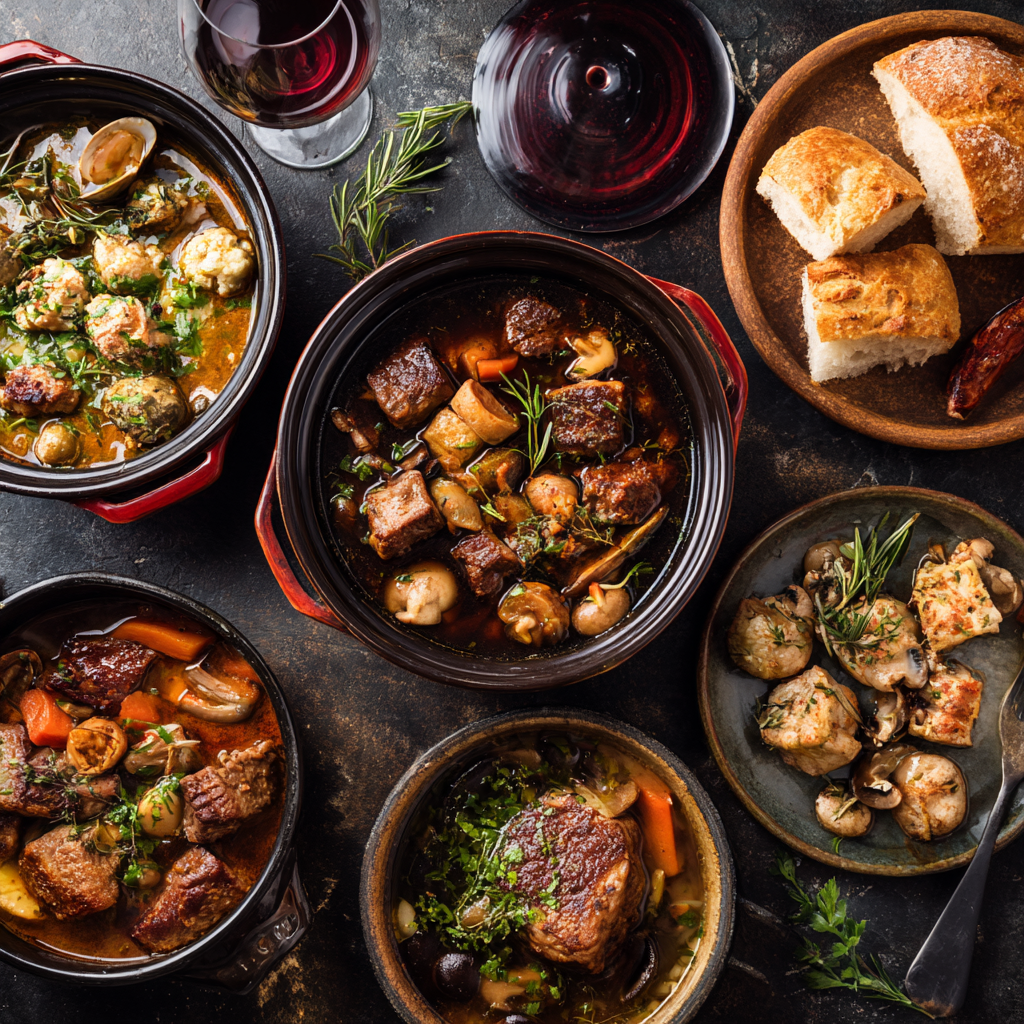
History of French Cuisine: Comfort Meets Elegance
The roots of French dinner recipes trace back to the Middle Ages, when meals were elaborate affairs for the aristocracy. The first known collection of French dinner recipes, Le Viandier, was written in the 14th century by Guillaume Tirel, also known as “Taillevent.” This collection highlights the opulence of medieval banquets, where spiced meats, seasonal vegetables, and theatrical presentations defined the earliest forms of French dinner recipes designed to impress both taste and sight.
During the Renaissance, Queen Catherine de’ Medici introduced Italian influences that shaped French dinner recipes, bringing refined techniques and sophisticated flavors to the French court. This era laid the groundwork for Haute Cuisine, a movement that placed elegance and artistry at the heart of French dinner recipes, with delicate sauces and beautifully plated dishes.
In the 17th century, chef François Pierre La Varenne published Le Cuisinier François, streamlining French dinner recipes by emphasizing local ingredients and simplifying methods. Later, culinary masters Marie-Antoine Carême and Auguste Escoffier elevated French dinner recipes further, establishing techniques and systems such as mise en place that continue to define classic cooking today.
From rustic peasant stews to royal banquets, French dinner recipes represent a culinary tradition where flavor, precision, and presentation coexist in perfect harmony. Each region of France contributes unique dishes—whether Provençal vegetable specialties or creamy Dauphiné gratins—making French dinner recipes an endless source of inspiration for modern home cooks.
10 French Dinner Recipes That Bring Comfort and Elegance
1. Chicken Provençal – A Taste of Provence
Ingredients:
- 4 bone-in, skin-on chicken thighs
- 2 tablespoons olive oil
- 1 onion, thinly sliced
- 3 cloves garlic, minced
- 2 tomatoes, chopped
- 1 cup black olives, pitted
- 1 tablespoon capers
- 1 teaspoon dried thyme
- 1 teaspoon dried rosemary
- Salt and pepper to taste
- Fresh parsley, chopped (for garnish)
Instructions:
- Heat olive oil in a large skillet over medium heat. Season the chicken with salt and pepper and brown on both sides. Remove and set aside.
- Sauté onion and garlic until softened. Add tomatoes, olives, capers, thyme, and rosemary.
- Return chicken to the skillet, cover, and simmer 30–40 minutes until cooked through.
- Garnish with parsley before serving.
Chef Tip: Browning the chicken first adds flavor and texture. Don’t skip the olives—they give the authentic Provençal briny note.
Fun Fact: “Provençal” literally means “from Provence,” reflecting the sunny, herb-rich cuisine of Southern France.
Serving Suggestion: Serve with roasted potatoes or crusty bread.
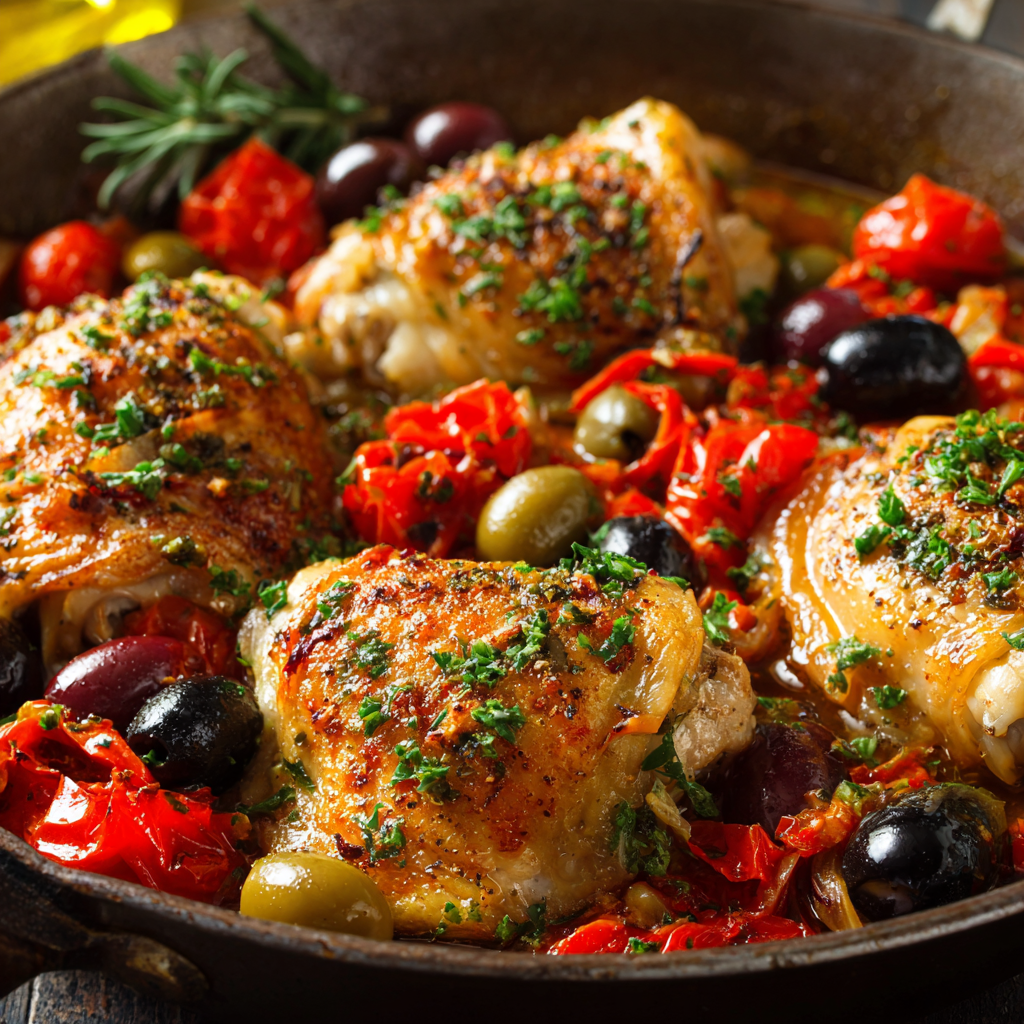
2. Boeuf Bourguignon (Alcohol-Free Version)
Ingredients:
- 2 pounds beef chuck, cubed
- 2 tablespoons olive oil
- 1 onion, chopped
- 2 carrots, sliced
- 2 cloves garlic, minced
- 1 cup beef broth
- 1 tablespoon tomato paste
- 1 teaspoon dried thyme
- 2 bay leaves
- 1 cup pearl onions, peeled
- 1 cup mushrooms, sliced
- Salt and pepper to taste
Instructions:
- Preheat oven to 325°F (165°C). Brown beef in olive oil, remove and set aside.
- Sauté onion, carrots, and garlic. Stir in tomato paste.
- Add beef, broth, thyme, bay leaves, salt, and pepper. Cover and bake 2 hours.
- Sauté pearl onions and mushrooms separately, then add to stew during last 30 minutes.
Chef Tip: Slow-cooking ensures tender, flavorful beef.
Fun Fact: Julia Child introduced Boeuf Bourguignon to Americans, calling it a “stew fit for a king.”
Serving Suggestion: Serve with mashed potatoes or buttered noodles.
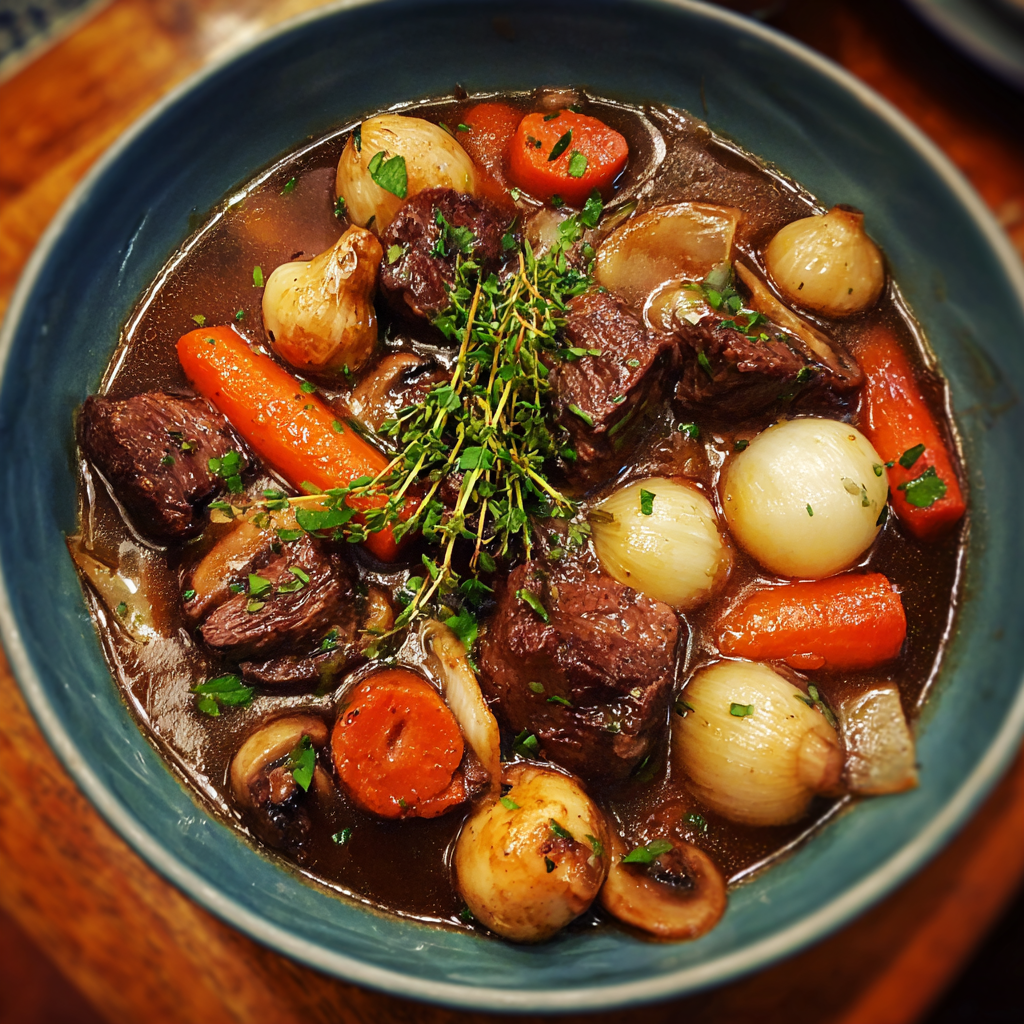
3. Ratatouille – Colorful Vegetable Medley
Ingredients:
- 1 eggplant, diced
- 2 zucchinis, diced
- 1 bell pepper, diced
- 1 onion, chopped
- 2 tomatoes, chopped
- 3 cloves garlic, minced
- 2 tablespoons olive oil
- 1 teaspoon dried basil
- 1 teaspoon dried thyme
- Salt and pepper to taste
- Fresh basil, chopped (for garnish)
Instructions:
- Heat olive oil, sauté onion and garlic until softened.
- Add eggplant, zucchini, and bell pepper; cook until vegetables soften.
- Stir in tomatoes, basil, thyme, salt, and pepper. Simmer 30 minutes.
- Garnish with fresh basil before serving.
Chef Tip: Slice vegetables evenly and layer beautifully for presentation.
Fun Fact: Ratatouille originated as a farmers’ dish to preserve summer vegetables.
Serving Suggestion: Serve with quinoa, couscous, or crusty bread.
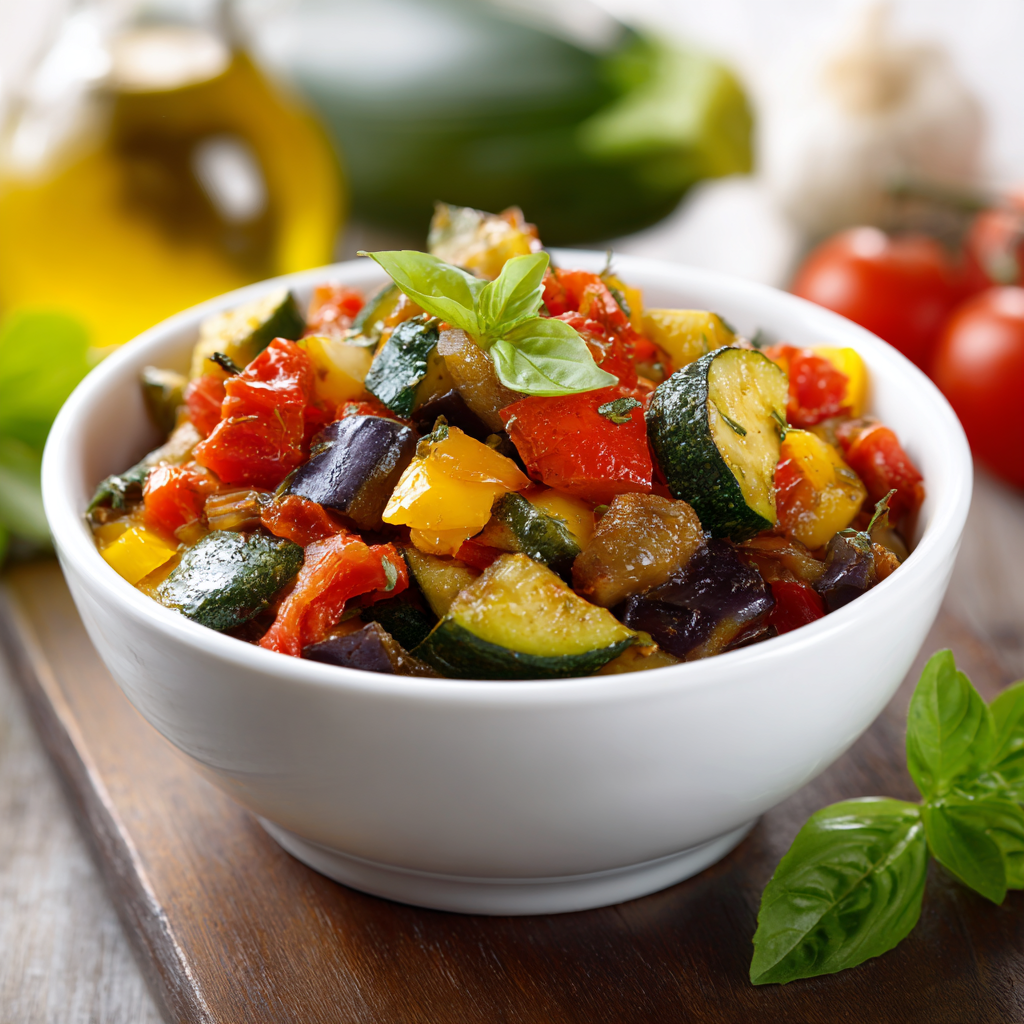
4. Duck à l’Orange – Festive Elegance
Ingredients:
- 2 duck breasts
- Salt and pepper
- 1/2 cup orange juice
- 1 tablespoon sugar
- 1 tablespoon white wine vinegar
- 1/4 cup chicken broth
- 1 tablespoon butter
- Orange zest (for garnish)
Instructions:
- Preheat oven to 400°F (200°C). Score duck skin, season, and sear until crispy.
- Roast duck 10–12 minutes for medium-rare.
- Make sauce: boil orange juice, sugar, and vinegar until thickened. Add chicken broth, reduce, whisk in butter.
- Slice duck, drizzle sauce, garnish with orange zest.
Chef Tip: Crisp the skin for indulgent texture.
Fun Fact: Originally a haute cuisine dish, served at festive celebrations.
Serving Suggestion: Pair with roasted root vegetables.
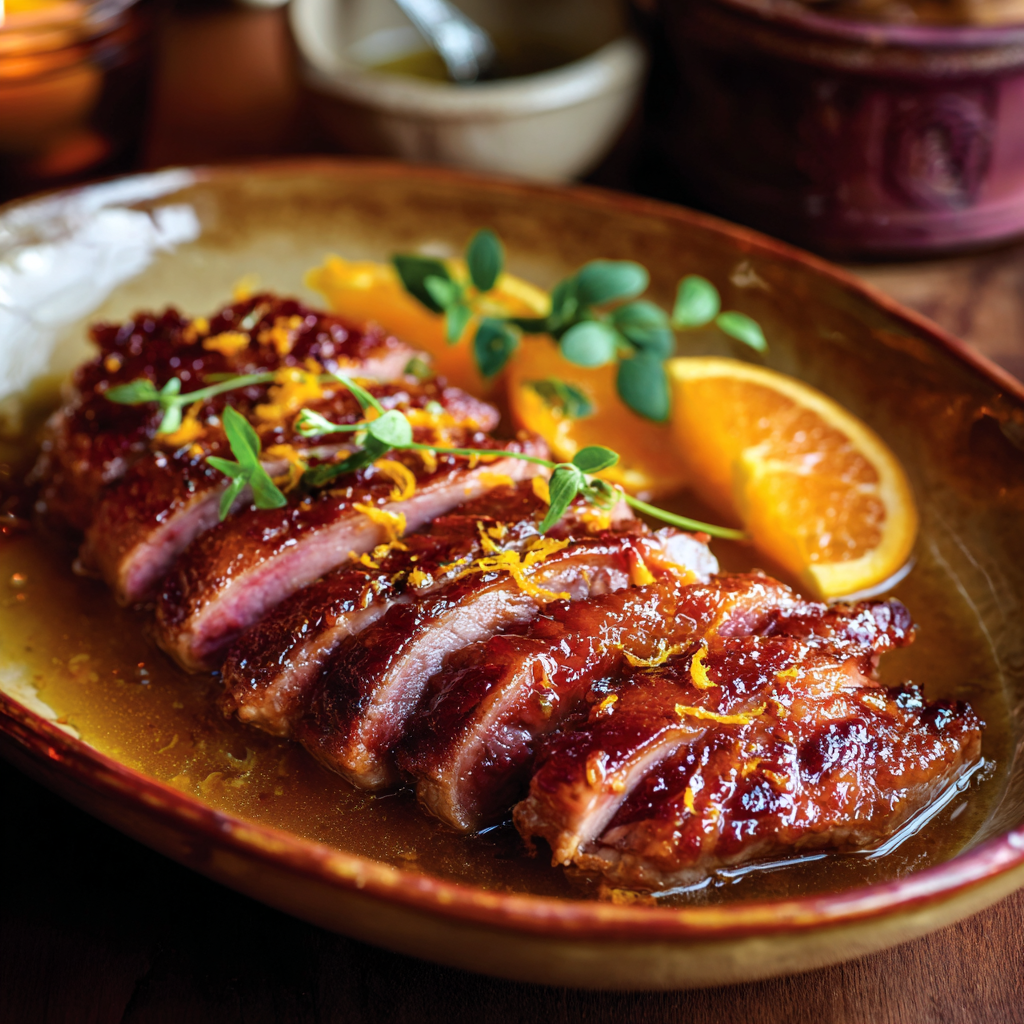
5. Quiche Lorraine (Without Bacon) – Creamy and Savory
Ingredients:
- 1 pie crust
- 3 eggs
- 1 cup heavy cream
- 1 cup grated Gruyère cheese
- 1/2 cup Swiss cheese
- 1/4 teaspoon nutmeg
- Salt and pepper
Instructions:
- Preheat oven to 375°F (190°C). Blind-bake crust for 10 minutes.
- Whisk eggs, cream, nutmeg, salt, and pepper.
- Spread cheeses in crust, pour custard mixture.
- Bake 30–35 minutes until set and golden.
Chef Tip: Blind-bake crust to prevent sogginess.
Fun Fact: Became popular internationally after World War II.
Serving Suggestion: Warm with a fresh salad.
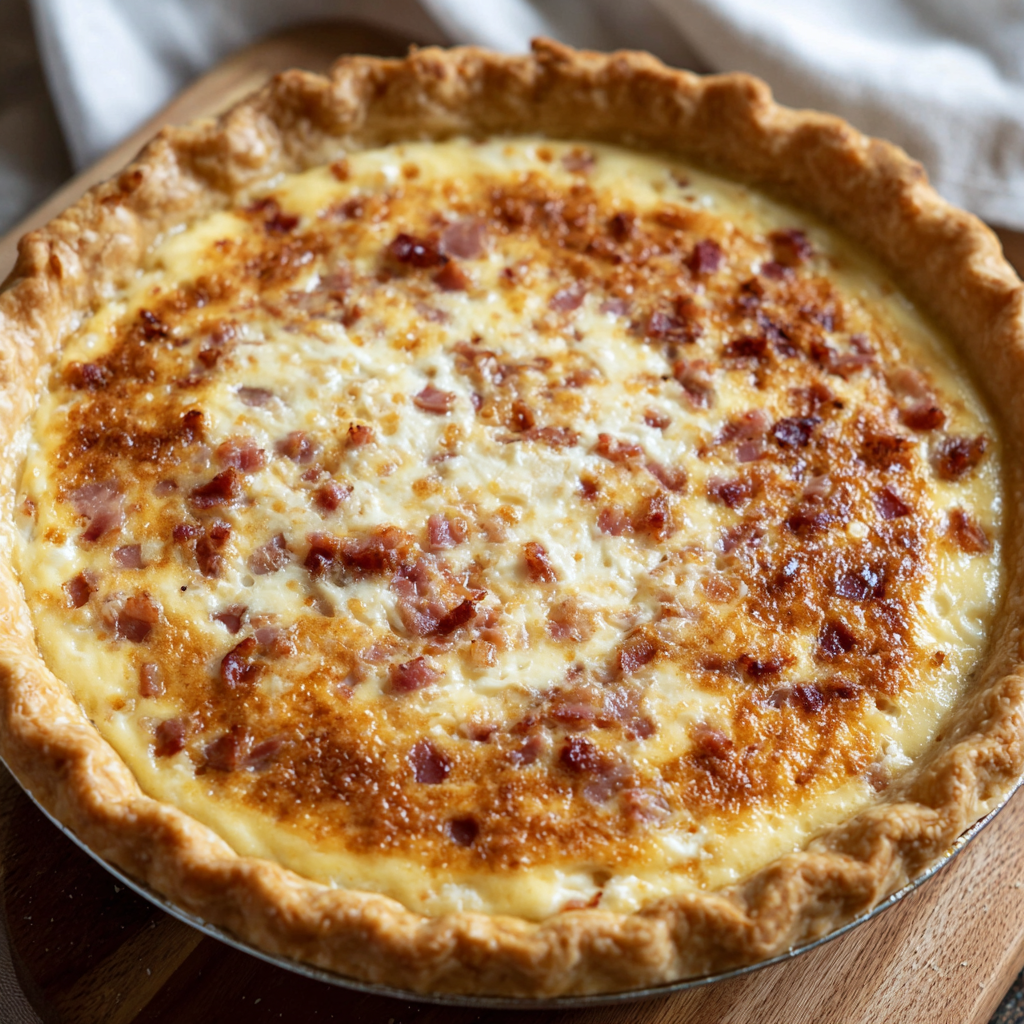
6. Chicken Fricassée – Classic Comfort in a Creamy Sauce
Ingredients:
- 4 chicken thighs, skinless
- 2 tablespoons olive oil
- 1 onion, chopped
- 2 carrots, sliced
- 2 cloves garlic
- 1 cup chicken broth
- 1/2 cup cream
- 1 tablespoon flour
- 1 teaspoon tarragon
- Salt and pepper
Instructions:
- Brown chicken, remove. Sauté onion, carrots, garlic.
- Sprinkle flour, stir, add broth. Return chicken, simmer 30 minutes.
- Stir in cream, cook 5 more minutes.
Chef Tip: Add cream at the end to keep sauce silky.
Fun Fact: “Fricassée” means to sauté lightly and then simmer.
Serving Suggestion: Mashed potatoes or rice.
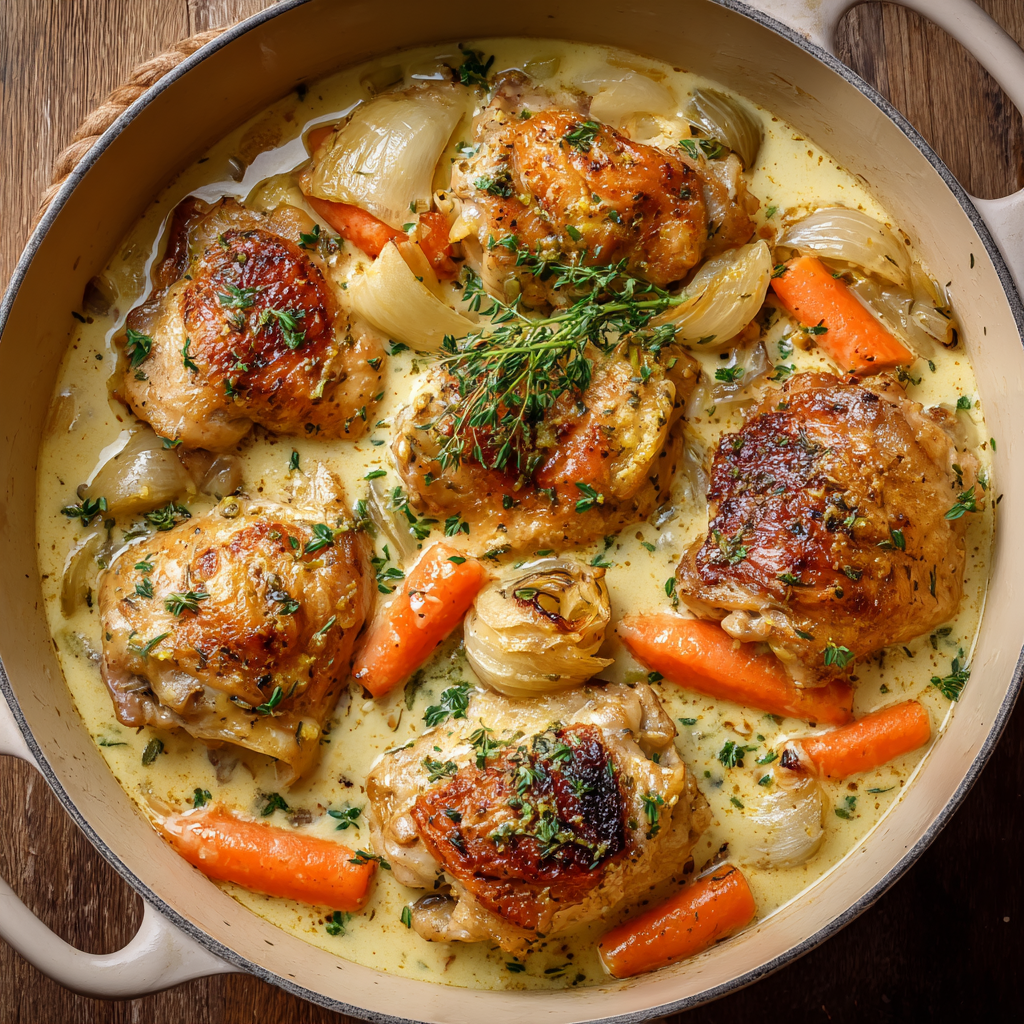
7. Cassoulet (Chicken Version) – Hearty Southern French Casserole
Ingredients:
- 2 lbs chicken thighs
- 2 tablespoons olive oil
- 1 onion, chopped
- 2 cloves garlic
- 2 carrots
- 1 cup soaked white beans
- 1 bay leaf
- 1 teaspoon thyme
- Salt and pepper
Instructions:
- Brown chicken, sauté vegetables. Add beans, herbs, water to cover.
- Simmer 2 hours until beans tender. Remove bay leaf.
Chef Tip: Pre-soak beans for creamy texture.
Fun Fact: Southwest France specialty; originally peasant dish.
Serving Suggestion: Hearty main with crusty bread.
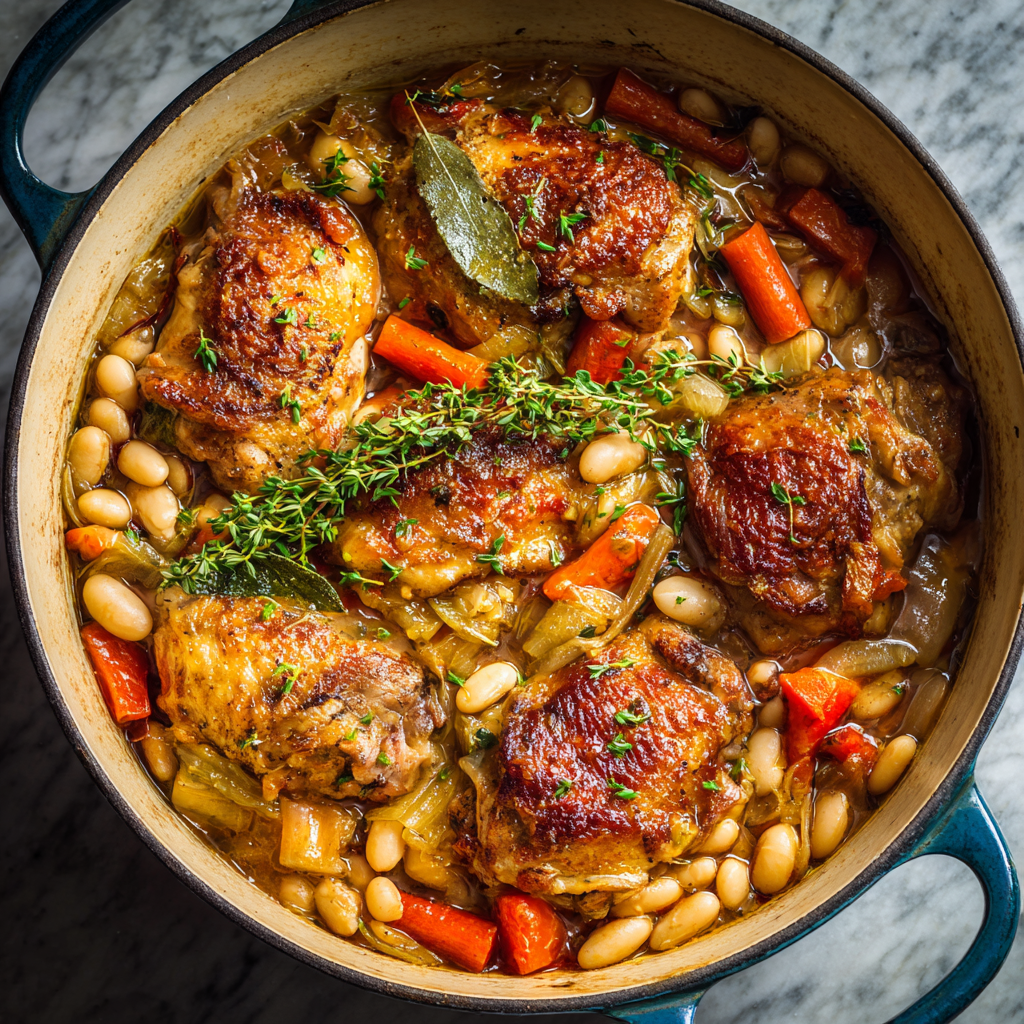
8. Sole Meunière – Delicate Fish Elegance
Ingredients:
- 4 sole fillets
- Salt and pepper
- 1/2 cup flour
- 3 tbsp butter
- Juice of 1 lemon
- 2 tbsp parsley
Instructions:
- Dredge seasoned fillets in flour.
- Melt butter, cook 2–3 min per side. Drizzle lemon, garnish parsley.
Chef Tip: Don’t overcook; use clarified butter for nutty flavor.
Fun Fact: “Meunière” means “miller’s wife,” referencing the flour coating.
Serving Suggestion: Steamed vegetables or salad.
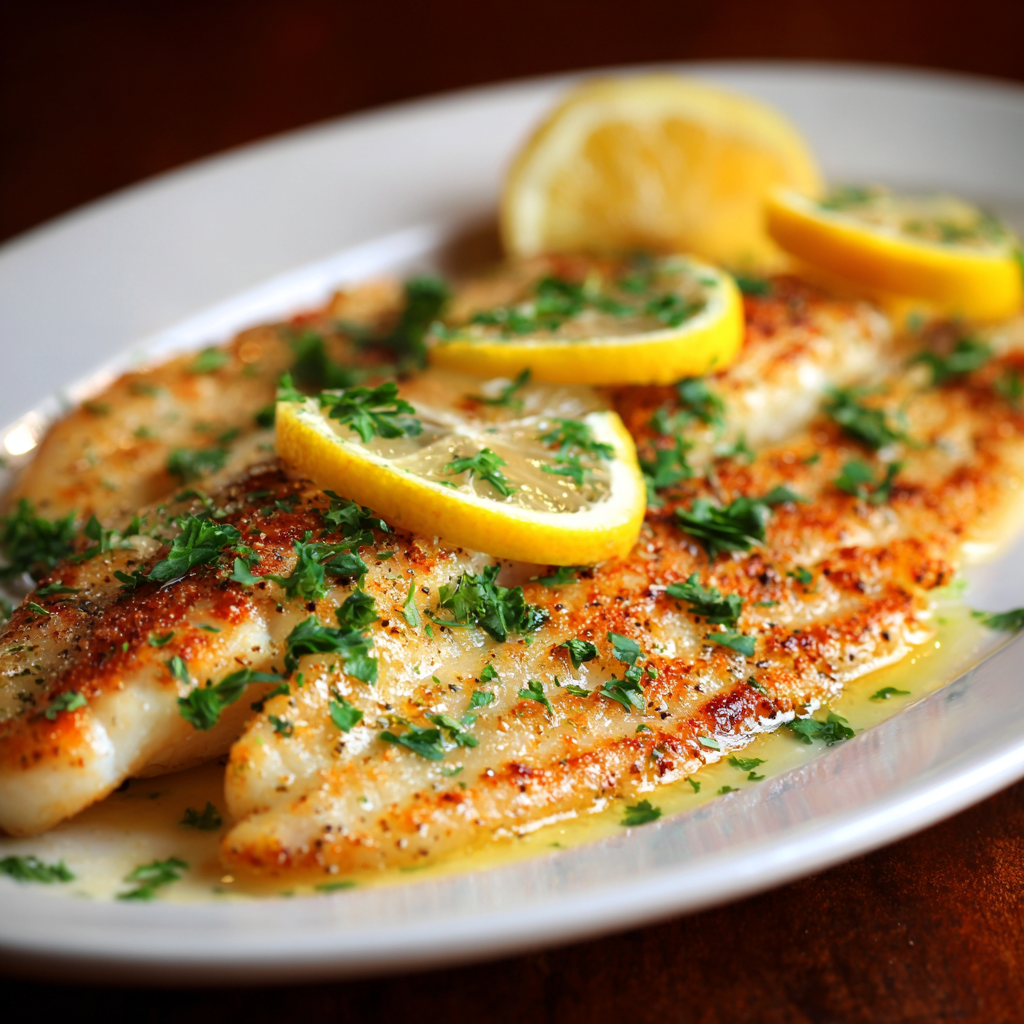
9. Gratin Dauphinois – Creamy Baked Potato Perfection
Ingredients:
- 2 lbs potatoes, thinly sliced
- 2 cups cream
- 2 cloves garlic
- 2 tbsp butter
- Salt, pepper, nutmeg
Instructions:
- Butter dish, rub with garlic. Layer potatoes, season each layer.
- Pour cream, dot butter, bake 50–60 min until golden.
Chef Tip: Use starchy potatoes for creaminess.
Fun Fact: Dauphiné region winter specialty.
Serving Suggestion: Side for meats or fish.
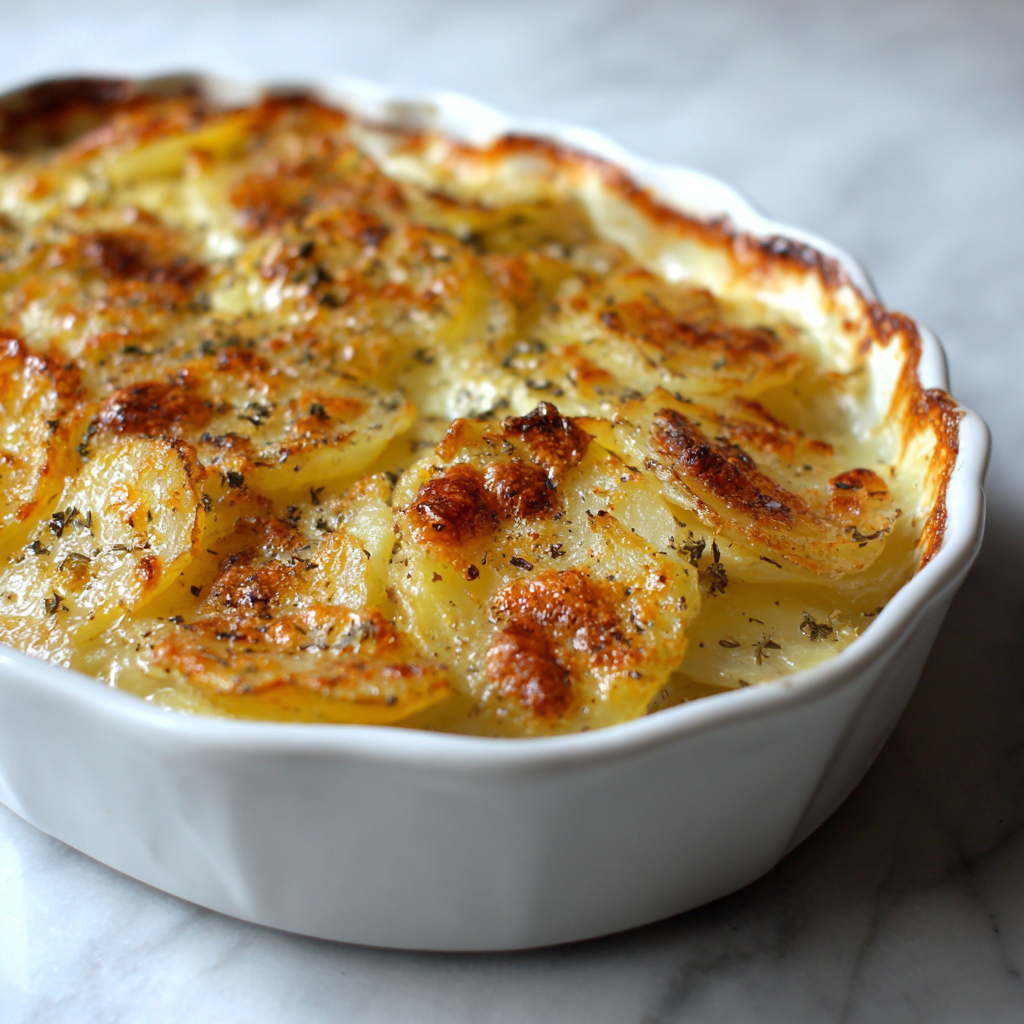
10. Bouillabaisse – Aromatic Provençal Fish Stew
Ingredients:
- 2 lbs mixed fish/seafood
- 2 tbsp olive oil
- 1 onion
- 2 tomatoes
- 2 cloves garlic
- 1 fennel bulb
- 1 tsp saffron
- 1 tsp thyme
- 4 cups stock
- Salt, pepper, parsley
Instructions:
- Sauté onion, garlic, fennel. Add tomatoes, saffron, thyme, stock. Simmer 20 min.
- Add fish/seafood, cook 5–7 min. Garnish parsley.
Chef Tip: Avoid overcooking seafood; add saffron for color and aroma.
Fun Fact: Originally a fisherman’s dish in Marseille.
Serving Suggestion: Toasted bread with rouille.
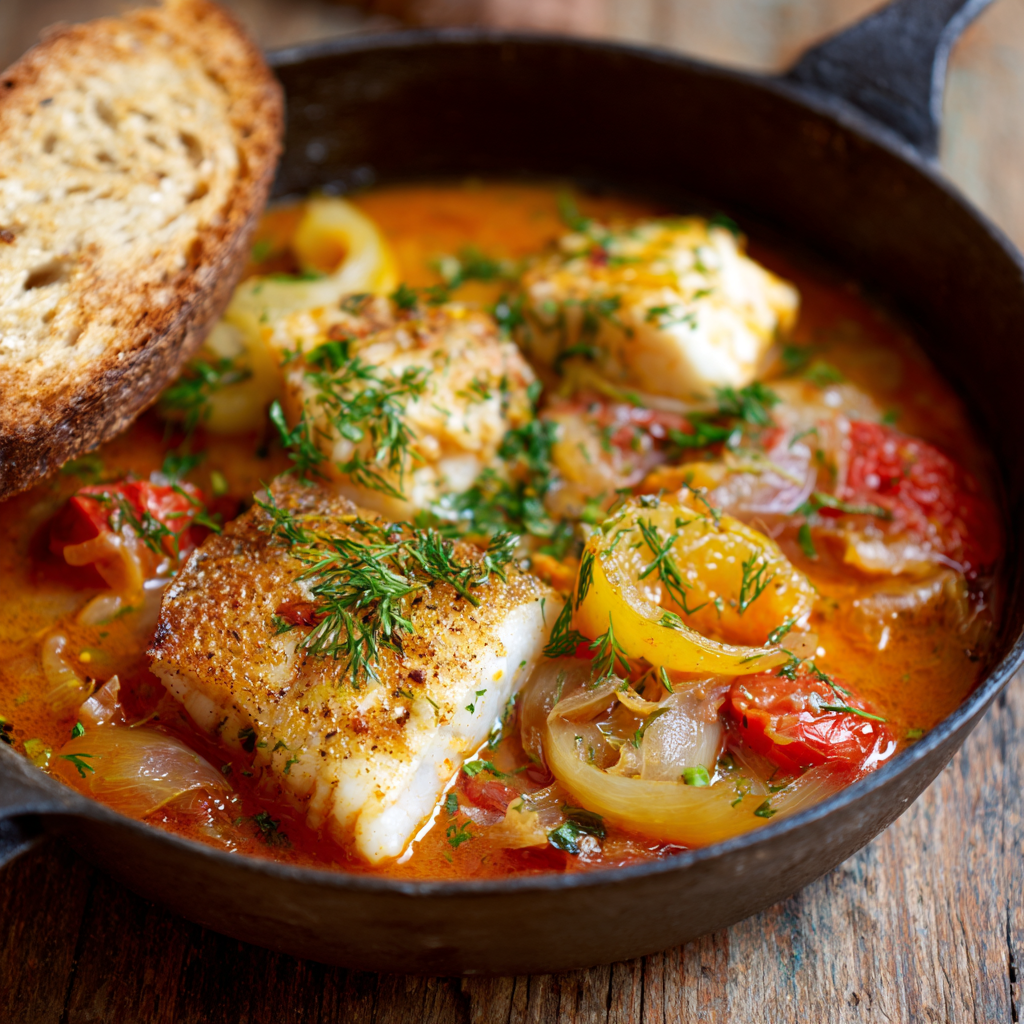
Additional Cooking Tips for Elegant French Dinners
- Use fresh herbs to brighten flavors.
- Balance sweet, savory, and acidic elements.
- Practice mise en place for efficiency.
- Layer textures: crispy, creamy, tender.
- Focus on plating for elegance.
Non-Alcoholic Beverage Pairings
- Chicken Provençal: Sparkling water with lemon
- Boeuf Bourguignon: Herbal tea or non-alcoholic red wine
- Ratatouille: Citrus-infused water
- Duck à l’Orange: Sparkling cranberry or orange mocktail
- Sole Meunière: Green tea or lemon-infused water
Frequently Asked Questions (FAQs)
- Can I make these recipes completely alcohol-free? Yes, use stock or grape juice.
- Can duck be substituted? Chicken or turkey works.
- Are these recipes suitable for weeknights? Quick ones like Chicken Provençal and Fricassée
Conclusion: Bringing French Comfort and Elegance to Your Table
French cuisine has a unique ability to blend sophistication with heartwarming comfort. The 10 recipes featured—ranging from the vibrant Chicken Provençal to the aromatic Bouillabaisse—showcase the richness, diversity, and timeless appeal of French dinners. Each dish tells a story, whether it’s rooted in regional tradition, family heritage, or centuries-old culinary innovation.
By using fresh ingredients, thoughtful techniques, and careful presentation, you can recreate the elegance of French dining in your own kitchen—without pork or alcohol, making these recipes accessible to everyone. From weeknight meals to festive occasions, these dishes provide both flavor and warmth, proving that comfort and elegance can truly coexist on a plate.
Embrace these recipes, explore their history, and enjoy the experience of preparing and sharing meals that are both nourishing and refined. With a touch of French culinary artistry, you can turn every dinner into a memorable occasion.
